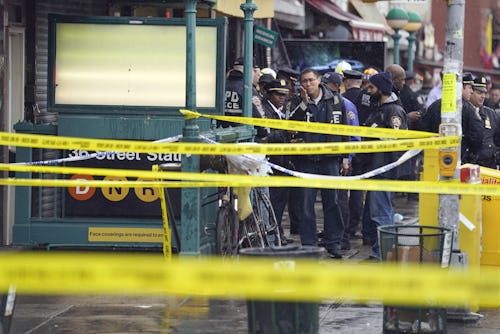Uber prices surged after the Brooklyn subway shooting
The company says the inflated fares — which charged customers as much as three times the standard price — happened “unintentionally” and they’ve since been disabled.

A shooting that took place inside a New York City subway on Tuesday morning in Brooklyn left at least 16 people injured. In response to the emergency situation, power was shut off on various lines of the mass transit system that carries more than 4.3 million people every day. Still needing to get to work or school, many people turned to Uber as an alternate means of transportation. They were greeted with fares up to $200.
Uber often applies a multiplier to its standard rates when demand for rides increases. According to the company’s documentation, these price increases are applied in real-time in response to the number of rides being requested at a given time. Requests, of course, spiked following the subway shooting from people seeking shelter and safe transportation, and Uber’s system automatically responded to these requests by charging people a premium to get to where they need to go.
In a screenshot posted to Twitter, one Uber user captured the pricing surge, showing fares that are two and three times the standard rate. The result was an option for a single ride that cost $145:
Uber told Mic that these increased fare prices have since been disabled. The company also explained that its Global Security Center monitors situations 24/7 in order to determine if a major emergency event has occurred. If the company does determine that a situation is an emergency, Uber claims that it will immediately cap pricing in the area. It’s worth noting though that this language does not necessarily mean no surge fee will be applied, just that it will be capped.
Uber did confirm to Mic that it is working to refund customers in New York City who were charged “unintentionally” with surge prices. The company also confirmed that drivers would keep the original fare for the rides.
While Uber may not have intended to capitalize off a tragedy, it did. Its system is built to do just that. Nothing that happened here was unintentional — it was by design. It’s just that when it happens in response to a tragedy, the optics don’t look so great.